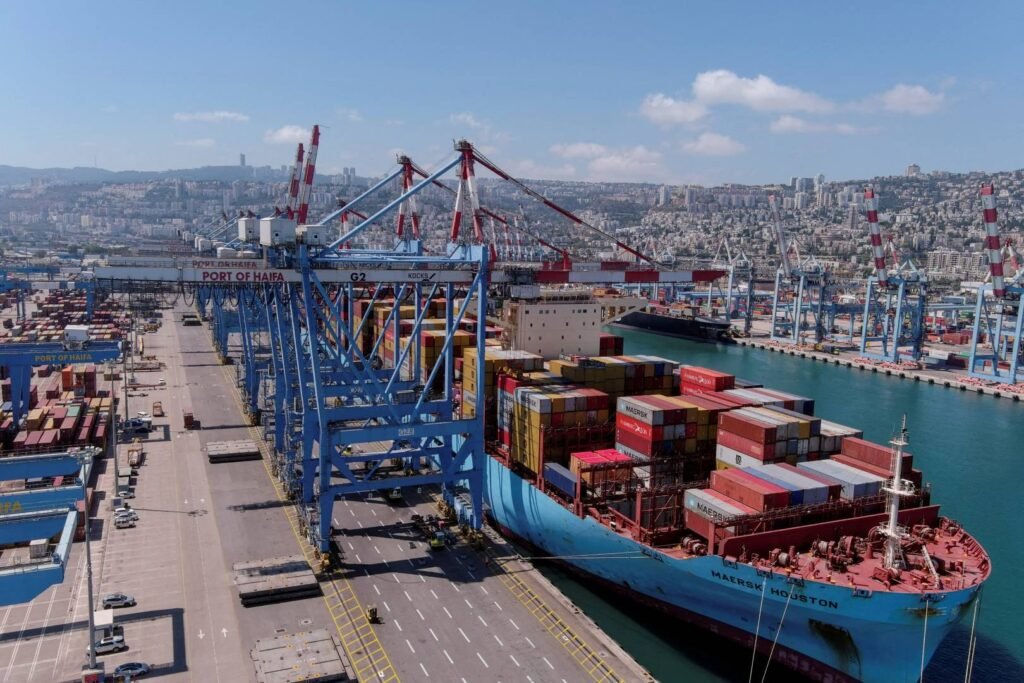Israel is positioned in Western Asia, bordering both the Mediterranean and Red Seas. Despite its geographical proximity to politically turbulent countries such as Syria and Egypt, as well as its adjacency to the Gaza Strip, Israel is widely acknowledged as a powerful nation actively involved in global geopolitics. Classified as a high-income economy by the World Bank, Israel boasts a well-developed technological and industrial sector.
In addition to its geopolitical significance, Israel has a robust commercial shipping sector, which includes six major ports and oil terminals.
Let’s delve into the distinctive features of these facilities.
There are 6 Major ports in Israel

- Port of Haifa
- Port of Ashdod
- Port of Eilat
- Port of Tel Aviv
- Port of Hadera
- Port of Ashkelon
1. Port of Haifa

The Port of Haifa is the largest of Israel’s three major international seaports, the others being the Port of Ashdod and the Port of Eilat. It is located in Haifa, Israel, and has a natural deep-water harbor that operates year-round, serving both passenger and merchant ships. The port was officially opened on October 31, 1933, and has since played a significant role in the economic development of the region.
In 2018, the port handled 29.53 million tons of cargo and 1.46 million TEUs (twenty-foot equivalent units) of containers. The modern passenger terminal at the port offers various facilities aimed at providing maximum convenience for passengers.
The Port of Haifa is one of the largest ports in the eastern Mediterranean in terms of freight volume and is a vital gateway for trade and passenger traffic. The port employs over 1,000 people, a number that rises to 5,000 when cruise ships dock in Haifa.
Passenger terminal
This facility serves both cruise ships and ferries and is the only terminal in Israel from where holiday cruises depart for the Mediterranean. The terminal is decked with world-class facilities and is fully air-conditioned. It has numerous waiting rooms, duty-free shops, souvenir shops, a large cafeteria, a currency exchange counter, free wifi, and a large car park for sailors.
Directly connected to the lower city of Haifa, the Haifa Railway Station and the central bus stop are also adjacent to this facility. The terminal has expanded considerably and is the only one in Israel that receives luxury ships and cruises with more than 5000 passengers on board.
Carmel Terminal
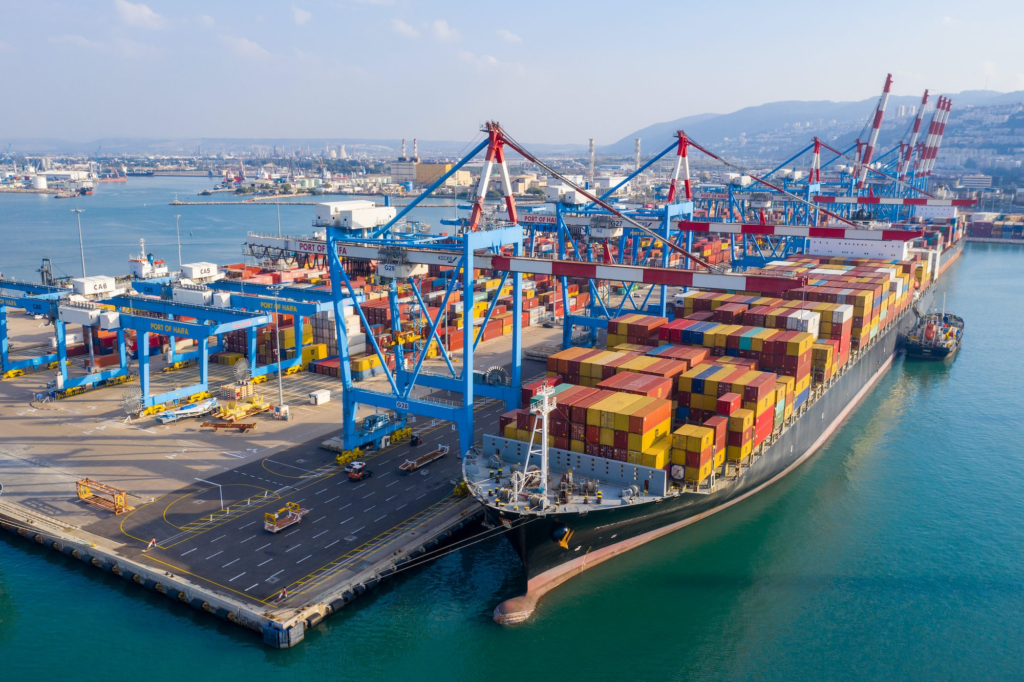
The Container terminal of Haifa port is the biggest in Israel and one of the most technologically advanced facilities. The green terminal was opened in 2010 however it became operational in the latter part of 2011.
It can handle more than 1 million TEUs annually and set a new record in 2020 as container throughput increased by six per cent to 1.47 million TEUs.This great feat was a result of the fast container processing and shorter waiting times, thereby increasing the port output.
Spanning 700 m with a water depth of approximately 16 m, the terminal can handle container ships with a capacity of 15,300 TEUs. It is also decked with the latest port equipment such as the world’s biggest 8 bridge cranes, capable of lifting two 35 tonne containers at once.
The terminal can unload two container ships simultaneously and comprises 5000 compartments for keeping containers. Around 25,000 containers can be stored in the stacking area with the aid of 15 gate cranes.
2. Port of Ashdod
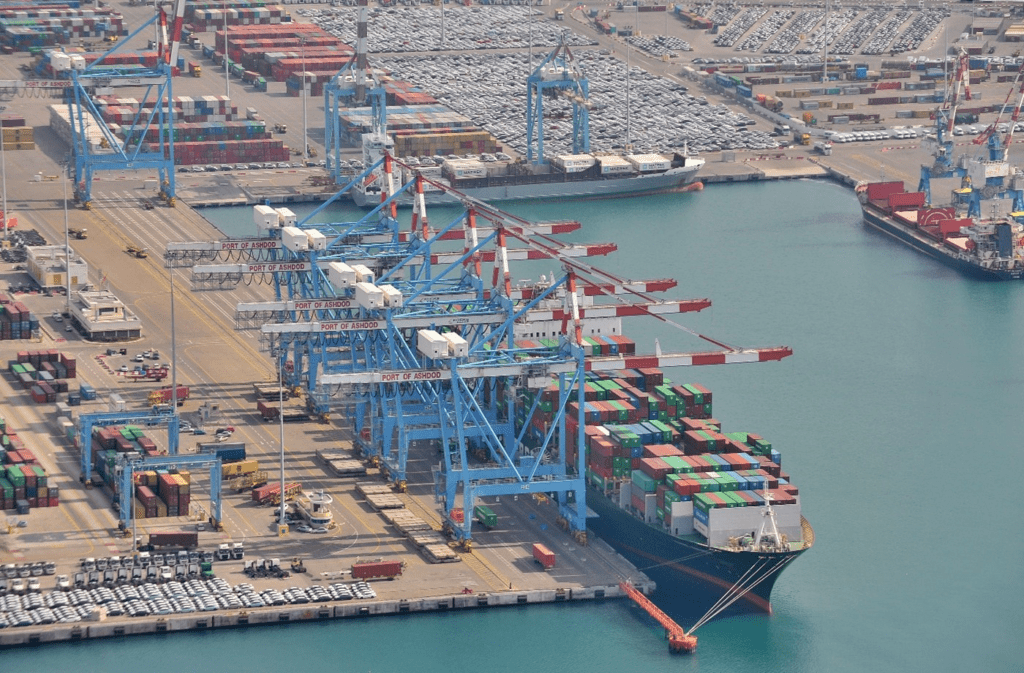
The Port of Ashdod is one of Israel’s three main cargo ports and is located in Ashdod, about 40 kilometers south of Tel Aviv, adjoining the mouth of the Lachish River. It is the largest sea port in Israel in terms of cargo throughput and a major entry point for merchandise and cargo. The port handles the largest volume of cargo containers annually, with 1.525 million TEUs in 2017.
It is also a significant entry point for humanitarian aid destined for the Gaza Strip. The port’s annual cargo tonnage in 2017 was 23.6 million tons, and it saw 26,757 in passenger traffic the same year.
The Port of Ashdod is an artificial harbor with 12 piers and is operated by the Israel Port Authority. It is well-connected to the industrial and production centers of the country, as well as to Tel Aviv, the commercial center. The port’s website is ashdodport.co.il. Additionally, Ashdod (Jerusalem Cruise Port) is Israel’s largest seaport and a popular stop for cruise ships
Container terminal – Port of Ashdod

The Eitan port became operational in 2006 and is an extension of Ashdod. It handled around 1.58 million TEUs in 2020. Constructed by extending the eastern breakwater by 1550 m and reclaiming 110 hectares, the facility has several docks with a total quay length of over 1650 m, capable of berthing super post-Panamax ships.
3. Port of Eilat
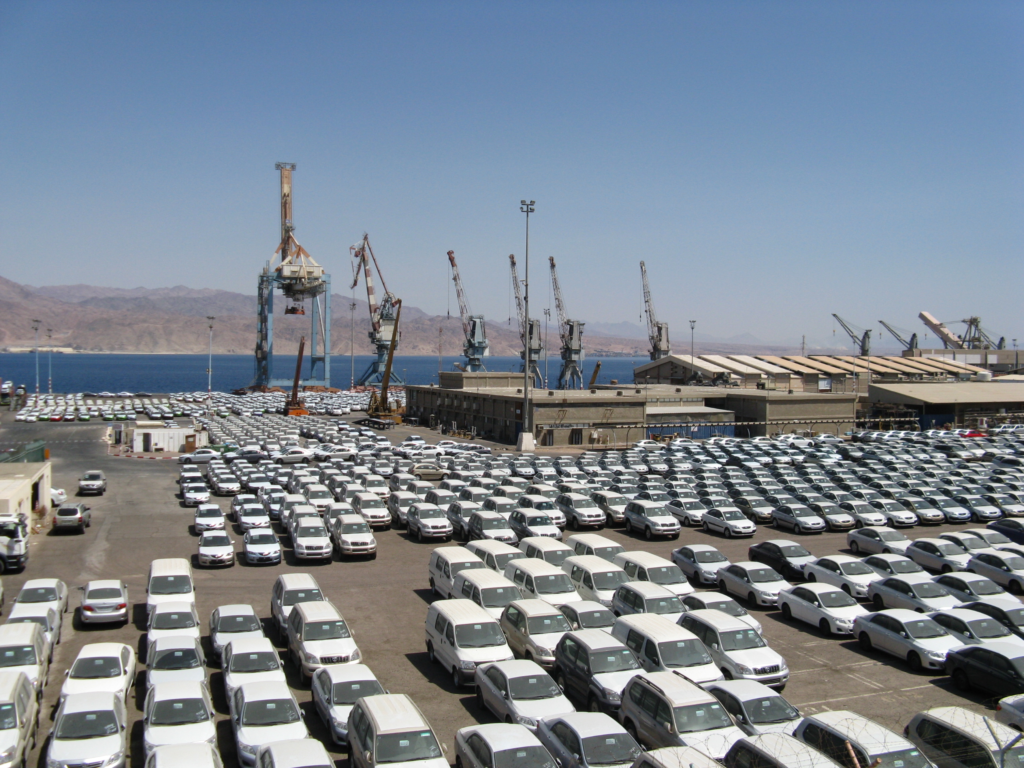
The Port of Eilat is the only Israeli port located on the Red Sea, situated at the northern tip of the Gulf of Aqaba. It was established in 1957 by the Ministry of Transport and relocated to its present location in 1965. The port operates as the southern gateway to Israel and is mainly used for trading with Far East countries. Some key aspects of the Port of Eilat include:
- Main Activities: The main activities in the Eilat Port area are conveying imported automobiles, export of fertilizers and quarried goods, and conveying of fuels.
- Ownership and Operation: The Port of Eilat is owned by the Government of Israel and operated by the Israel Port Authority.
- Cargo Tonnage: In 2012, the port handled 2.6 million tons of cargo.
- Container Volume: The port’s annual container volume in 2018 was 1.46 million TEUs (twenty-foot equivalent units).
- Passenger Traffic: The port is also a popular destination for cruise ships, with 140,054 passengers in 2017.
- Privatization: In February 2005, the Eilat Port Company was established as an independent government-owned company.
- Eilat Ashkelon Pipeline Company (EAPC): The EAPC was founded in 1968 and serves as a land bridge between the Fuel Port in Eilat and the Fuel Port in Ashkelon. The company operates two ports – one in Eilat and the other in Ashkelon, and its crude oil pipeline system includes three pipelines: the first, 254km in length, links the Fuel Port in Eilat with the Fuel Port in Ashkelon, and the other two pipelines supply the refineries in Haifa and Ashdod1.
The Port of Eilat is an important gateway for trade and passenger traffic, connecting Israel to the Indian Ocean without the need to sail through the Suez Canal. However, the port has faced challenges in recent years, with ship traffic decreasing by 85% since Yemen’s Houthi rebels began attacking Red Sea positions, including the port and city.
Also read, Somali Pirates & Piracy in 2024
4. Port of Tel Aviv
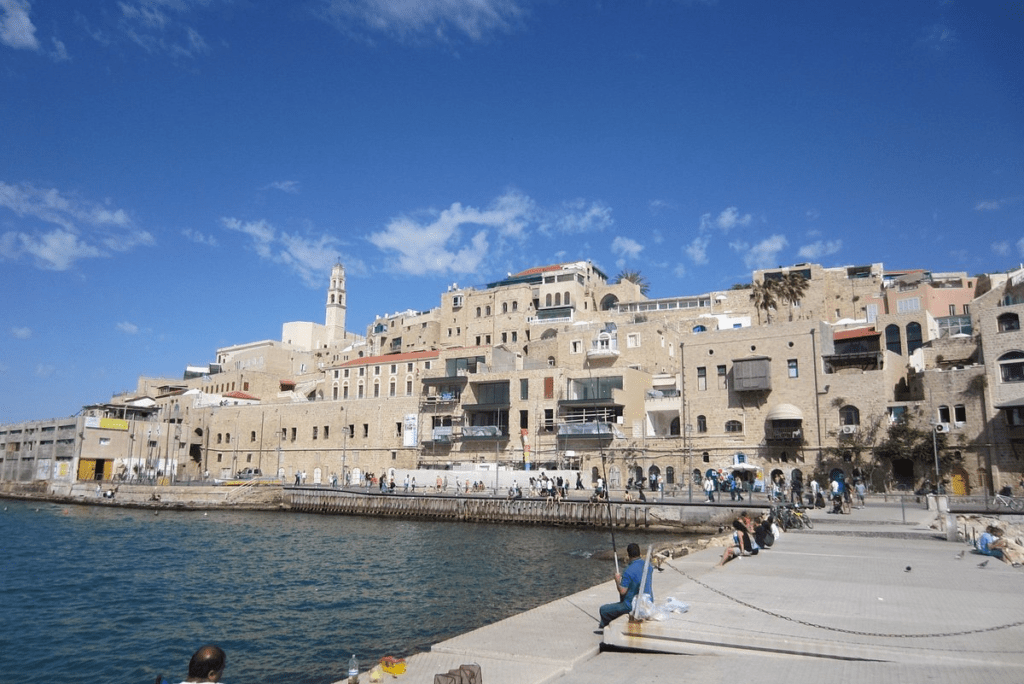
The Tel Aviv Port is a commercial and entertainment district located in northwest Tel Aviv, Israel, along the Mediterranean Sea. The port is no longer active and was closed down on October 25, 1965, when its operations moved to the newly built Ashdod Port. The area was used by day as a low-key shopping place for tiles and….
However, the Tel Aviv Port has been transformed into a lively and popular destination for locals and tourists, with bustling markets, shops, restaurants, and a lively night scene. The port is a perfect place to come with kids who can play along the wooden decks or take a ride on the merry-go-around.
The shops are open until 10 PM and even later during the summer. Visitors can cross the bridge to the old Reading power station and lighthouse, both Tel Aviv landmarks.
The spot is the beginning of beautiful Hayarkon Park in Tel Aviv, which runs along the Yarkon Stream. Unlike the Jaffa Port where you can still see fishing boats plying their trade, you won’t find any shipping vessels here
5. Port of Hadera

The Port of Hadera is located in Israel, approximately halfway between Tel Aviv and Haifa. It specializes in handling coal and fuel oil products. The port has a maximum draft of 20.5 meters, a maximum beam of 48 meters, and can accommodate vessels with a maximum deadweight tonnage (DWT) of 225,000.
It also has an anchorage depth of 30 meters. The port is an important hub for the handling of these specific types of cargo, making it a significant part of Israel’s maritime infrastructure.
The port city is also famous for the Hadera Paper Enterprise established in 1953. It also houses one of the world’s biggest desalination plants. Israel’s main power station, the Orot Robin Power plant is located near the port facility.
6. Port of Ashkelon

The Port of Ashkelon is situated approximately 2 nautical miles south-southwest of the town of Ashkelon and 10 nautical miles south-southwest of Ashdod. It is primarily an oil terminal with a maximum draft of 22.9 meters, maximum length overall (LOA) of 335.2 meters, and maximum deadweight tonnage (DWT) of 250,000. The port is a significant part of Israel’s maritime infrastructure, specializing in the handling of oil products.
However, it has been affected by regional conflicts, leading to temporary closures. The port is distinct from the Port of Ashdod, which is a major cargo port located about 40 kilometers south of Tel Aviv.
Fun fact: Haifa Port is famous and Most Important port of Israel and it’s a port of India-Middle East Europe Corridor (IMEC)

You might also like to read:

